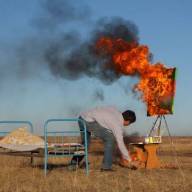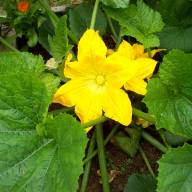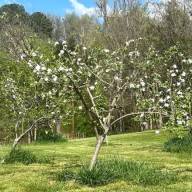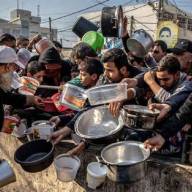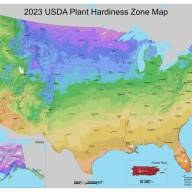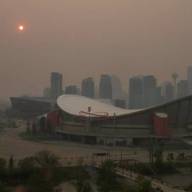Let's begin with three basics: food growing, food storing, and seeds. And, tempting as it is to view these three sequentially, it's good to keep all three in mind simultaneously because they are inseparable.
Growing Food
What's your growing zone? Growing plants indigenous to zones other than the one you live in requires paying for extra energy inputs in heating, lighting, humidifying or dehumidifying. So, learn your zone (1 is coldest):
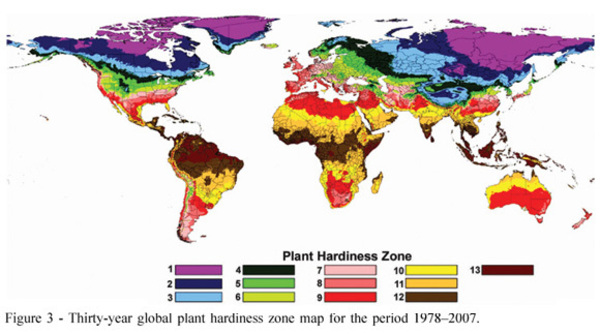 https://www.scielo.br/j/sa/a/QpBRyPmZQTXsG6VrQYmv9zy/?lang=en#
https://www.scielo.br/j/sa/a/QpBRyPmZQTXsG6VrQYmv9zy/?lang=en#
Hardiness zones give us the average lowest temperature for our region, setting parameters for what will - and won't - grow in our area. The zones tell us nothing about moisture, wind, elevation, soil type, pollution, pollinators or pests in our area, nor do they directly correlate with length of day or growing season. But, they give us a starting point (as Epic Gardener Kevin Espiritu explains in this 8 min video, if you want more info). That's why every seed packet and seed catalog lists them.
Seed packets also list germination time and growing time ("days to maturity"). This Special Edition is coming out mid-June, too late for starting seeds in many places, but check the packet. A 7-10 days germination time with 60 days to maturity would probably make it. Or, be sure and get young plants already started. Wherever you get your seeds or starts will also have potting soil, amendments and advice. Get all three!
What's your diet and taste?
Gardening for food security is different from ordinary vegetable gardening because our purpose is to grow the largest harvest of hearty foods with the fewest increasingly expensive outside energy inputs (purchased fertilizers, extra lighting, etc.).
To do this, we must shift from our learned mindset ("I can live in zone 4a and enjoy orange juice and bananas in December.") to a Nature-based mindset ("Strawberries, apples, cherries and blackberries grow in zone 4a where I live. I can have them - or their juice or jam - for breakfast in December through careful storage.) We begin to see foods like orange juice as great 1000-mile treats to be thoroughly enjoyed when we're able to get them, but not as intrinsic parts of our daily diet. "Local food" takes on its true meaning.
Rule #1: Choose to grow nutrient-dense foods you like that will grow well (even wild) where you live.
Most foods have literally hundreds of heirloom varieties, at least one of which will grow well wherever you live. Potatoes are one such food. Ask local growers and farm suppliers which varieties grow best where you are, and be sure to learn which store the longest, an important difference. Potatoes are not demanding to grow, and they produce a large amount of food which should store until early spring. Find one or two other such foods and concentrate on these for your first year.
Rule #2: Keep a garden record!
Make a map of your garden (even if it's your windowsill) with several blank copies. Date your first one and mark what you plant where and when, what you're able to harvest and when, and any notes.
As lettuce, say, begins to mature to beautiful full plants, start more lettuce seeds. In two weeks, those seeds will be starts ready to set out just as the original plants are fullest. The starts will begin to mature as the original plants "bolt" (begin to quickly grow straight up in preparation for setting seed). "Succession planting" means you'll never be out of lettuce (or whatever) all season. It's much easier to accomplish this if you have a record of planting dates.
When a longer maturing crop is harvested for the year, there is probably a good winter crop you can plant in that bed. It may be a "cover crop" that restores the soil for next season or a root vegetable that over-winters. Some crops should never be planted in succession with each other because they are related and can encourage pests to make a home in the soil. Succession planting, cover cropping, and winter crops cannot be addressed in this brief primer, but knowing about them gives you a roadmap for "next steps".
Food Storage
While beginning a growing space, it's important to purchase food to store immediately. Food security is both stored food and the ability to grow more. Also, stored food is usually grains, which are more difficult to grow on a small scale. Purchased in 50 lb bags, grains are an inexpensive insurance. Here is a simplified guide for setting up your storage. And, here is the largest US supplier of organic grains and natural, organic, non-GMO, earth-friendly food and products.
Whether home is an apartment or a small farm, a big storage consideration is pests. From pantry moths to roof rats, our fellow creatures spend a good deal of every day looking for food. A great solution is a galvanized steel garbage can. One 31-gallon can will store two 50-lb bags of grain or beans for several years if needed.
Suggestion: Store white rice and beans because they are versatile staples and store well. (Brown rices, wild rices do not store as well or as long as white rice.) Always store organic foods. When planning for lean times, we want the most nutrient-dense foods without any "modifications" that tax our immune systems. Two 50 lb bags will feed two people for several months.
Store at least one gallon of water per person per day, in glass if possible but in plastic if glass just isn't practical. Catching rainwater is a good addition, but needs purification and is better left for a later post. There are many ways to purify water. Here are several from an internet search.
Seeds
Each gardening season begins and ends with seeds. In January, the seed catalogs come. It's an exciting time! When purchasing seeds, check the growing zone and the days to maturity on the back of the seed packet. Buy only heirloom seeds, i.e., non-GMO seeds from reputable growers. Avoid hybrids because the seed those plants produce will be unpredictable. If you are lucky enough to have neighbors who have grown what you're hoping to grow, ask how their crop fared, then whether they saved seeds and have enough to share or barter with you. Not only will you get seeds that will grow where you live, you'll no doubt get invaluable advice along with them.
After mid-summer, different plantings will bolt in their own time. Choose the healthiest ones in each crop and let them go to seed. You can clear the others out of the planting area if you want. It takes a good deal of time for most crops to set seed and for the pods to dry enough to collect the seed. If rains threaten, you may have to cut off the stems, carry them inside and hang them upside down so the seed pods will continue to dry. A paper bag placed over the seed pods will catch the seeds when the pods open.
Collecting seeds is no doubt the most important and most neglected part of gardening. It is the key to food security, self-reliance, independence. It's the reason companies like Monsanto fight so hard to keep farmers from collecting seed; the companies want the farmers dependent on them for seed, having to return each year to buy more seed. Each seed is a miracle: a tiny potential plant that can produce hundreds of its own seeds. Store seeds in sealed, named, dated baggies inside a sealed container kept in your freezer. Your seeds will sleep during their winter in the freezer. In spring, you can bring them out to thaw in time for planting to begin.
For more information on seeds, Seed to Seed is a good resource, or you may enjoy our Lifeboat Show on saving seed.
The most important thing is to begin...
Shared Homesteading Opportunity
Our small, well established homestead in the coastal Pacific Northwest can accommodate another couple and, as we retired here nearly 20 years ago, we would appreciate the help of some younger hands. Separate apartment, horse barn, established gardens, greenhouses, pasture, orchard, woodlot, goats, and chickens, with room for whatever other possibilities NTE permits.
Please, no seasonal, temporary, or “learning experience” inquiries. If you are ready to leave the system, we offer a shared place to shelter during collapse.
If you are interested in this particular opportunity, or have a homestead opportunity of your own to share with others, contact us.




